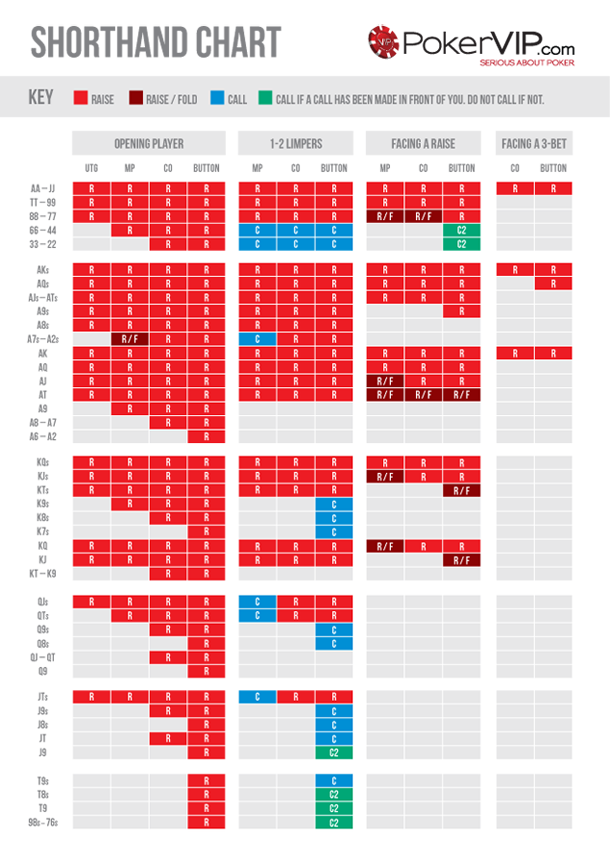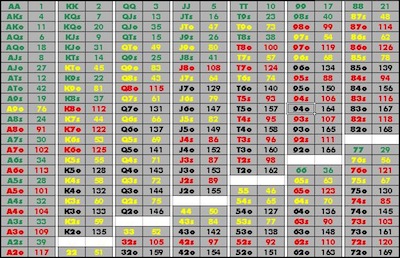Starting Hand Chart
Today, I want to write a bit about the value of keeping charts by hand. I’ve written on this topic before, but I think it is so important it’s worth another reminder here. Though it is time consuming and is probably one of the oldest of the “old school” practices, I have found great value in keeping price charts by hand. In fact, it is the single most useful practice I know of to help a trader really learn how to read and understand price charts.
When I started trading, I didn’t use a chart service or a computer program. I was figuring everything out from scratch, and didn’t even really know what kinds of chart services might have helped me or where to find them. Instead, I had a newspaper and graph paper and every day I would add one price bar to my charts for coffee, sugar, grains, meats and metal futures, and I actually spent time in a library going back through old issues to find historical data to build older charts. This was incredibly time consuming, to say the least. After doing this for a while, I did eventually get a charting service, but I am sure those first few months of charting by hand laid the foundation for understanding the action behind the charts.
Several years later, I found myself struggling a bit as I made transitions to new products and new timeframes. One of the best suggestions I received was to take a step back and start keeping a five-minute swing chart of the S&P 500 futures by hand every day, and so it began. For the next year and a half, I graphed every single move of the market by hand. This required complete focus, and, most importantly, I had to be sitting at the desk every minute the market was open paying attention to prices on the screen. What began on a single piece of graph paper grew, after much taping and stapling, into a leviathan that coiled around the walls of my home office, and had cuts where the door was so it was possible to enter and exit the room. (It helps to have an understanding family if you are going to try a stunt like this!)
Starting Hand Chart (BSS) Your Cards Actions before you Early Position Middle Position Late Position Blinds High Pairs AA, KK, QQ All players fold Raise One player called Raise One player raised Raise Middle Pairs JJ, TT All players fold Raise One player called Raise One player raised Call 20 Low Pairs 99 - 22 All players fold Fold Call Raise Call. The least common hands are the suited hands. Each suited hand have four possible combinations. For example A-Ks: A♥-K♥, A♦-K♦,A♣-K♣, A♠-K♠. Starting hands charts. All starting hands in Texas hold'em can be displayed shematically in a chart: All hands, both with suited and offsuited versions are included. If there is more than one raise then only playthe premium hands. This chart is a general guide for beginners and game conditions must always be ta(n into account. Please refer to. This is also the reason why there is no clear cut starting hand chart for PLO unlike its popular cousin Texas Hold’em. We at adda52 have tried our best to compile some of the top hands that are playable from all positions. The top 30 Omaha starting hands are as follows: 1.
There are many ways to do this practice (and I’ve written about a few of them in blogs and in my book). You can skip the charts and simply write down prices at specified intervals. In other words, if you’re a daytrader, maybe write down prices for 6 active stocks and the S&P 500 every 15 minutes throughout the day. Longer-term traders can write down end of day prices, maybe for major global stock indexes, bonds, gold, etc. Simply writing down prices has the benefit of pulling you away from charts. Many modern traders are probably too dependent on charts, and looking at raw prices forces you to think about the data differently. For most traders, this is really uncomfortable at first. Try it and see—the less you like it, the more you probably need to do it, at least for a while.
Pot-Limit Omaha Starting Hands Chart by OmahaPlanet.com Starting hands in Pot-Limit Omaha are grouped by structure. With so many possible 4-card combinations it is actually the suits, closeness of the cards and pairs as well as the high card strength that makes the difference between a strong starting hand.
You also can keep full charts by hand. The specifics of how to do this don’t matter as much as having a consistent methodology for defining the swings. When I did this intraday, I was defining a swing as a move a certain percentage of intraday ATR off a swing high and low. So, for instance, once the market came off a high by a distance equal to 3 average bar ranges, I would draw a line on the chart and then wait for price to bounce three ranges off a low point to draw the next line. You can use a system like this, but there are many other options. It is just as useful to keep simple bar charts or point and figure charts.
Why in the world would anyone do this? Well, first of all, electronic charts may make life too easy. It’s too easy to look at thousands of price bars a day on your screen and simply accept them for what they are, scanning for heads and shoulders or whatever pattern you want to give a shot this week. Pretty soon, your eyes just glaze over. Drawing lines by hand forces you to think about the buying and selling that is behind each move in the market. The act of picking up a pencil engages a different part of the brain and makes learning faster and more complete. This makes you pay attention in a deep, almost Zen, sense of the word. It is not enough that you are at your desk. You must really focus and be in the moment while you are trading. Keeping charts by hand encourages this state and enforces the kind of discipline needed for top-notch trading.
I am not saying this is the solution to all your trading problems, but I believe doing this taught me to read charts better than anything else I have done. At the very least, it’s a different perspective on the learning process and market acction—in the year 2014 you won’t hear many other people tell you to sit down at your computer and break out the graph paper!
Starting Hand Selection:Chen Formula : Sklansky Starting Hand Groups
The Sklansky & Malmuth starting hands table.
| Group | Hands |
|---|---|
| 1 | AA, AKs, KK, QQ, JJ |
| 2 | AK, AQs, AJs, KQs, TT |
| 3 | AQ, ATs, KJs, QJs, JTs, 99 |
| 4 | AJ, KQ, KTs, QTs, J9s, T9s, 98s, 88 |
| 5 | A9s - A2s, KJ, QJ, JT, Q9s, T8s, 97s, 87s, 77, 76s, 66 |
| 6 | AT, KT, QT, J8s, 86s, 75s, 65s, 55, 54s |
| 7 | K9s - K2s, J9, T9, 98, 64s, 53s, 44, 43s, 33, 22 |
| 8 | A9, K9, Q9, J8, J7s, T8, 96s, 87, 85s, 76, 74s, 65, 54, 42s, 32s |
| 9 | All other hands not required above. |

This table comes from the book Hold 'em Poker for Advanced Players by David Sklansky and Mason Malmuth.
This is a strategy book for limit Hold'em, but the starting hand groups do have some practical use in no limit Hold'em.
What is the Sklansky and Malmuth starting hands table?
The table is a general ranking of hands in Texas Hold'em.
The Sklansky and Malmuth starting hands table groups together certain hands in Texas Hold'em based on their strength. Starting with the strongest set of hands that you can be dealt in group 1, the hands get progressively weaker working down the table until the virtually unplayable hands in group 9.
The rough idea is that a hand in one group has roughly the same value and can be played the same way preflop as any other hand in that group.
How to use the starting hands table.
In their book, Sklansky and Malmuth provide some in-depth guidelines for starting hand strategy in limit Texas Hold'em using this table. Unfortunately, I'm not going to work out any guidelines for you for the NL Hold'em game using this table because:
- It would be quite a tricky job.
- It would be difficult to remember and implement.
- Like any starting hand strategy, it would have its flaws.
- You should avoid using strict guidelines and set rules as much as possible during play.
So really there is not a lot to take away from this table from a purely strategic perspective. Nonetheless it's interesting to see how specific starting hands compare to one another based on their preflop value.

If you're really after a starting hand strategy guideline, try the Chen Formula.
Holdem Poker Starting Hands Chart
Sklansky and Malmuth hand rankings evaluation.
Although it's a very popular hand group rankings table, it's not going to do you too much good to learn the whole thing off by heart. In my opinion, the real value of this table is being able to see how different starting hands can be grouped together and ranked based on their value before the flop.
Starting Hand Chart Texas Holdem
For other useful charts and tables, see the odds charts page from the Texas Hold'em tools section.
Starting Hand Chart
Go back to the awesome Texas Hold'em Strategy.
Comments